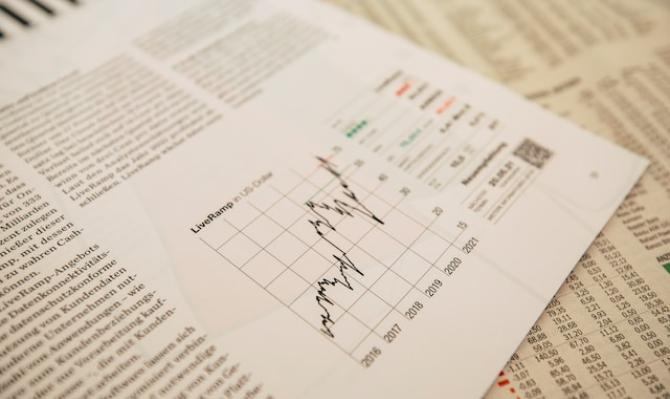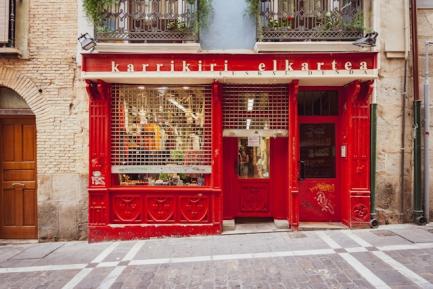Which sectors have benefited the most from the pent-up demand?
Consumption has surged since the end of the last state of emergency in May. To a large extent, this consumption is driven by pent-up demand as a result of unprecedented forced savings in the face of the restrictions on activity and mobility that were imposed since the beginning of the pandemic to curb the spread of the virus. Which sectors have seen the biggest rebound in spending? Why have durable goods not picked up as much?

Consumption has surged since the end of the last state of emergency in May. To a large extent, this consumption is driven by pent-up demand as a result of unprecedented forced savings in the face of the restrictions on activity and mobility that were imposed since the beginning of the pandemic to curb the spread of the virus. Thanks to completely anonymised internal CaixaBank data,1 we will see that the recovery in spending has been very uneven between the various sectors, and we will also analyse whether there are significant differences between consumers of different income levels and ages.
- 1. Specifically, data on payments made using cards issued by CaixaBank on CaixaBank point of sale (POS) terminals.
Specifically, we analysed the growth in consumption since May, when the last state of emergency came to an end. As can be seen in the first chart, the recovery in spending has been particularly pronounced in the case of transportation, and above all in leisure and catering and in tourism. Thus, the sectors most affected by the restrictions (which were mostly still in force in Q1 2021) are the ones that are recovering the most.2 On the other hand, durable goods (furniture, textiles, etc.) have benefited much more modestly from the rebound in consumption observed since May, as we shall see below. In contrast, spending on essential goods has declined (except for among lower-income households), partly because these goods can be substituted by the services offered by the catering sector.
- 2. Part of this rebound is explained by a base effect, because consumption in these sectors was depressed during the first part of the year. However, their high growth rates compared to the pre-pandemic period between May and September reinforce the hypothesis that these sectors have been where most of the pent-up demand has materialised. For more information, see the CaixaBank Research consumption tracker at https://www.caixabankresearch.com/en/publications/monitor-consumo.

Another aspect that draws attention is that, in most sectors, the rebound in consumption has been more intense among people with lower incomes. This can be explained by the fact that these groups will have released all of their pent-up demand during 2021.
As for the age of the consumer, the consumption patterns are very similar across the board. However, as shown in the second chart, the replacement of essential goods with leisure and catering has been greater among seniors. It is this group that has recorded the highest growth rates in the essential goods sector since the outbreak of the pandemic.3 It is therefore plausible that, now that they have begun to feel safer thanks to the progress in the vaccination campaign, they have replaced part of this expenditure with spending on catering.
- 3. See the article «The consumption of each generation in normal times... and in times of pandemic» in the Dossier of the MR05/2021.

In the first part of the article we have seen how spending on transportation, leisure and catering and tourism have picked up significantly in recent months. However, the recovery in durable goods has been more contained,4 a pattern that we observe in the different subsectors that we can capture using CaixaBank’s internal data (see third chart). What is the reason for this?
- 4. In fact, the recovery is somewhat less than that shown in this article, as it includes spending in the automotive sector, one of the most heavily affected by the bottlenecks currently affecting supply.

This is partly due to the sector’s significant capacity to adapt to online sales channels, which are experiencing significant and persistent growth, thus cushioning the fall in face-to-face sales (see fourth chart). In this regard, the recovery in spending on durable goods, although evident, has not been as pronounced as in other sectors given that its contraction during the pandemic was milder.

A second factor concerns supply chains and production capacity. The fact that most of the drop in consumption during the pandemic was explained by the enforcement of restrictions5 has caused demand to recover much faster compared to previous crises (in fact, consumption levels in all categories of goods already exceed 2019 levels). However, in many sectors supply has not been able to recover so quickly.
This mismatch between supply and demand has placed tremendous strain on supply chains, especially in maritime transportation. In the durable goods sector, where the final product is often the result of a long production chain, this situation is particularly relevant. The price of shipping a container with goods by boat has skyrocketed in recent months, reaching heights not seen in recent years, and this has caused many firms to run out of supplies with which to maintain their production levels (see fifth chart).
- 5. See the Focus «The role of pent-up demand in the euro area recovery in 2021» in the MR05/2021, or «Household saving during the pandemic and its possible effects on the future recovery in consumption» in the Bank of Spain’s Economic Bulletin 1/2021.

Finally, another aspect to consider, and which is also related to the mismatch between supply and demand, leads us to China, the world’s factory. The new guidelines set out by Beijing on containing energy consumption in order to keep prices at bay and comply with environmental targets have led to a significant number of companies having to scale back their production, or even to halt it altogether for a few days. Together with the aforementioned stress affecting supply chains, these two problems may pose a downside risk in the durable goods market for the remainder of Q4 2021.
- 1. Specifically, data on payments made using cards issued by CaixaBank on CaixaBank point of sale (POS) terminals.
- 2. Part of this rebound is explained by a base effect, because consumption in these sectors was depressed during the first part of the year. However, their high growth rates compared to the pre-pandemic period between May and September reinforce the hypothesis that these sectors have been where most of the pent-up demand has materialised. For more information, see the CaixaBank Research consumption tracker at https://www.caixabankresearch.com/en/publications/monitor-consumo.
- 3. See the article «The consumption of each generation in normal times... and in times of pandemic» in the Dossier of the MR05/2021.
- 4. In fact, the recovery is somewhat less than that shown in this article, as it includes spending in the automotive sector, one of the most heavily affected by the bottlenecks currently affecting supply.
- 5. See the Focus «The role of pent-up demand in the euro area recovery in 2021» in the MR05/2021, or «Household saving during the pandemic and its possible effects on the future recovery in consumption» in the Bank of Spain’s Economic Bulletin 1/2021.




